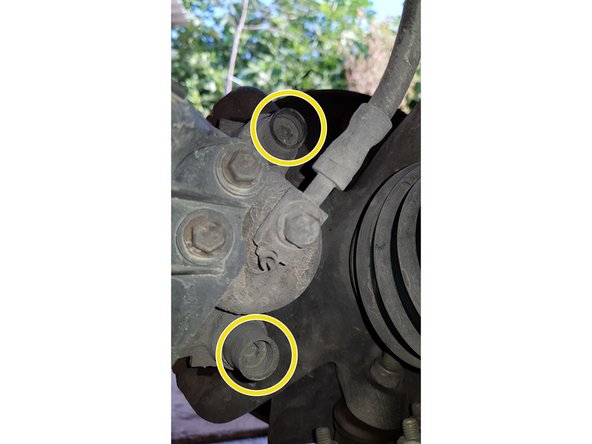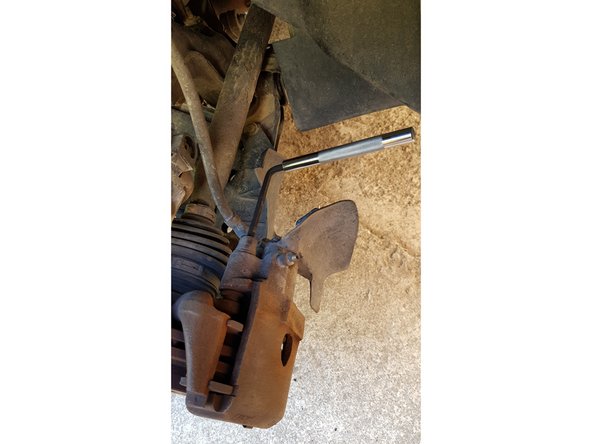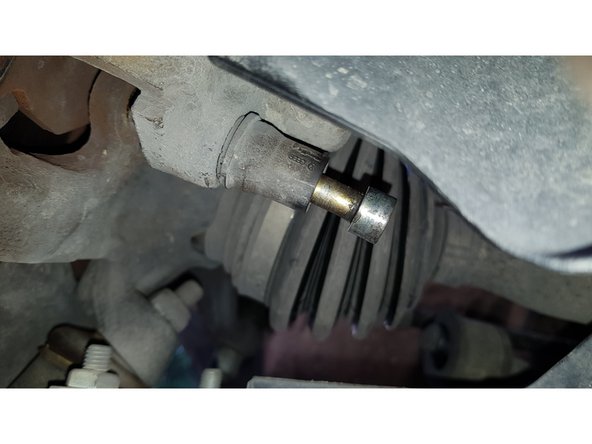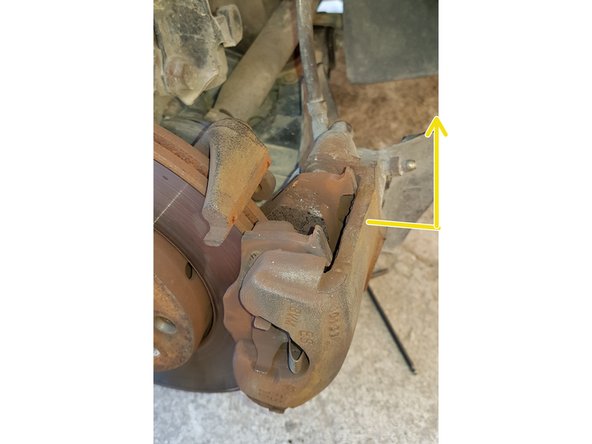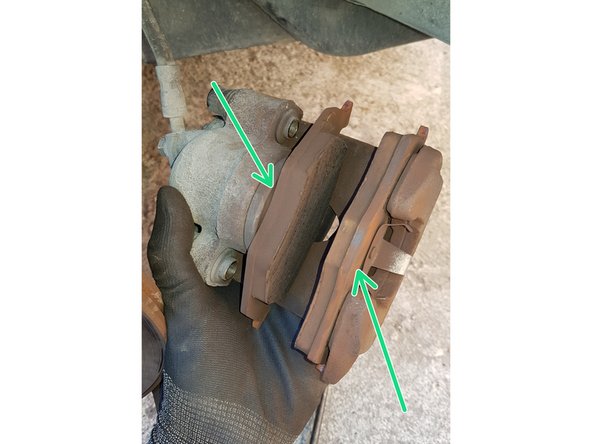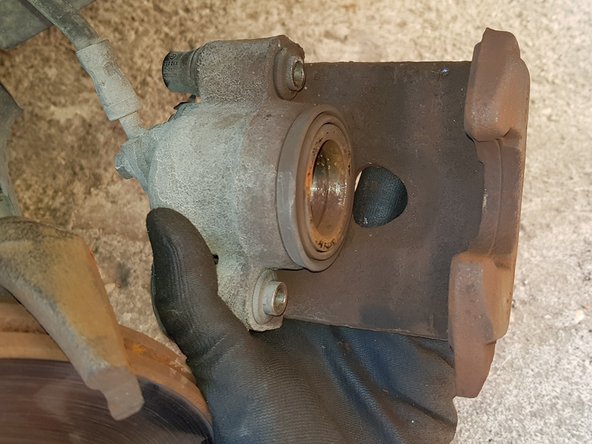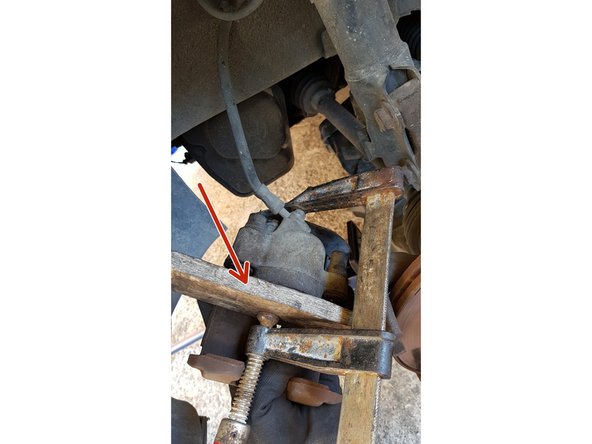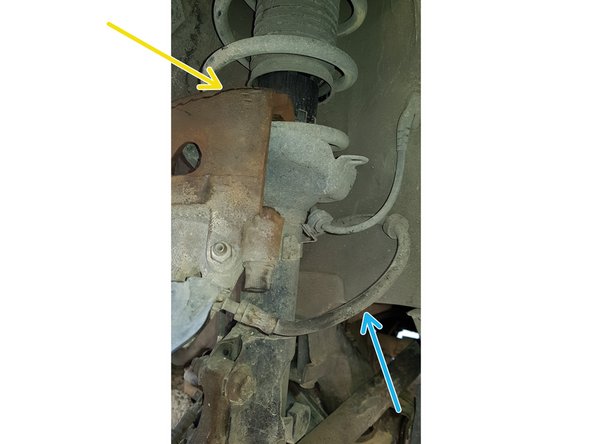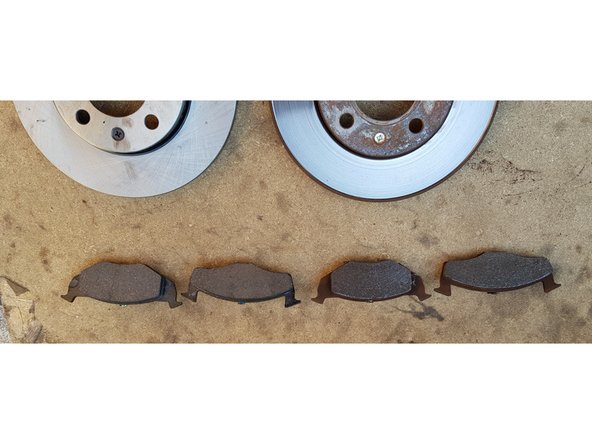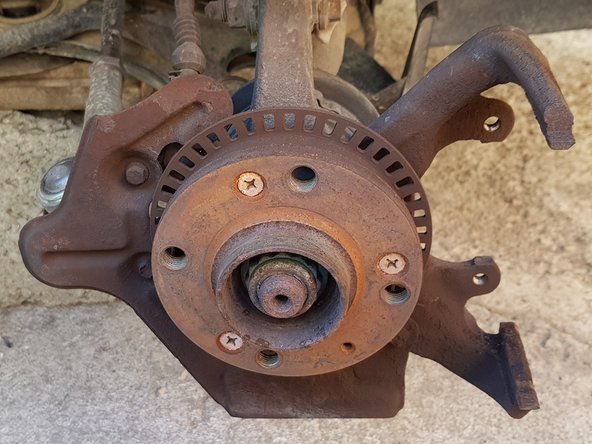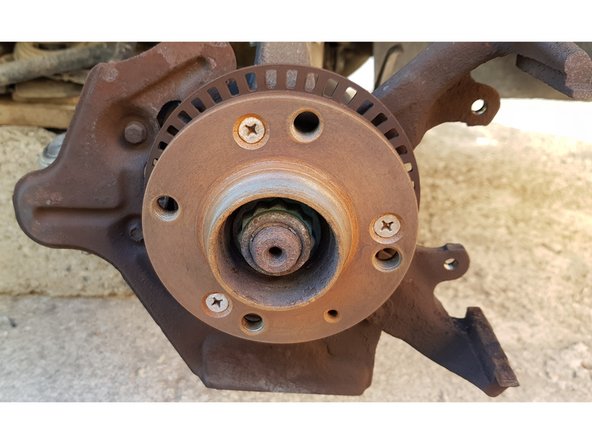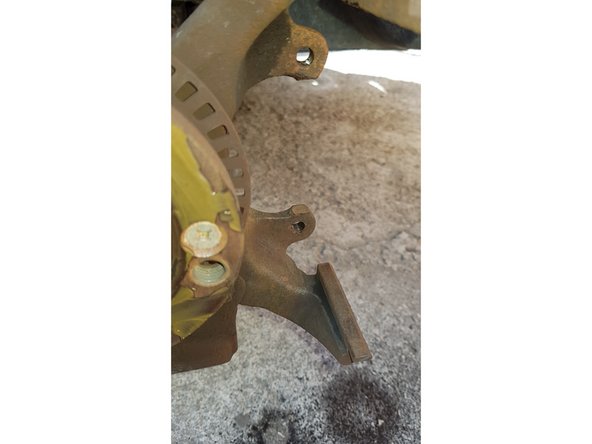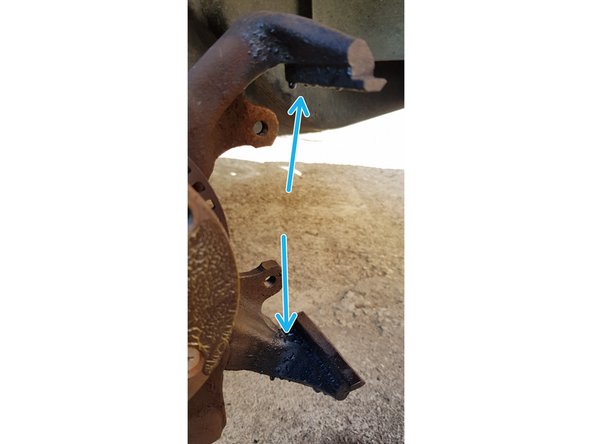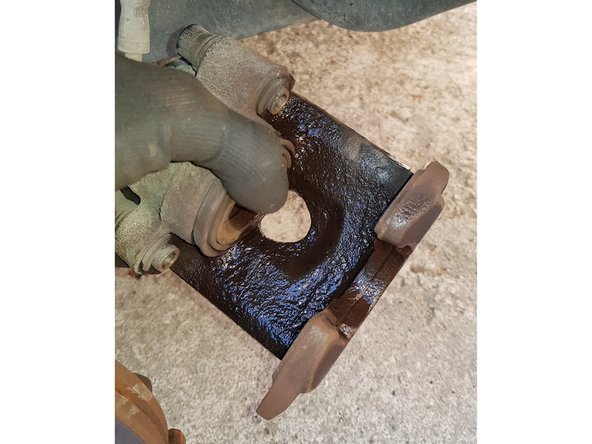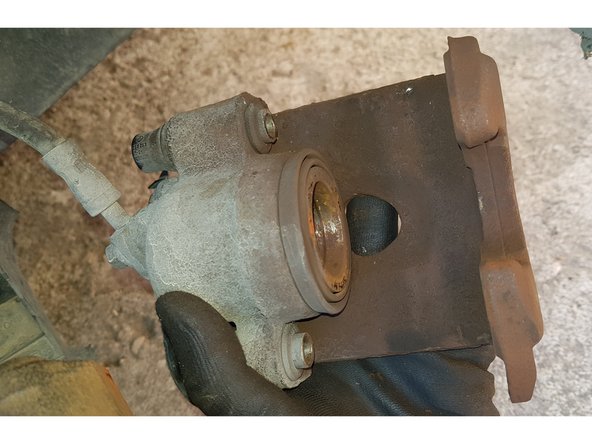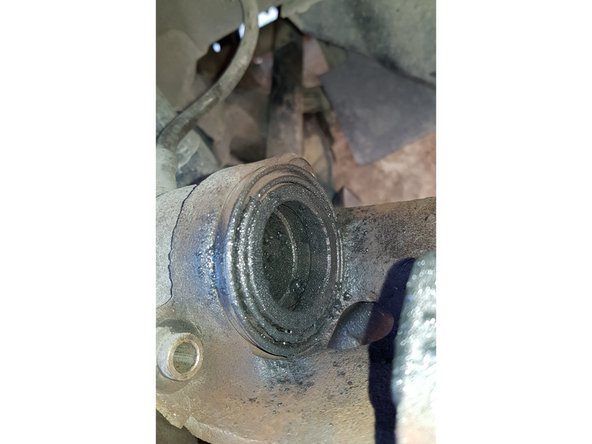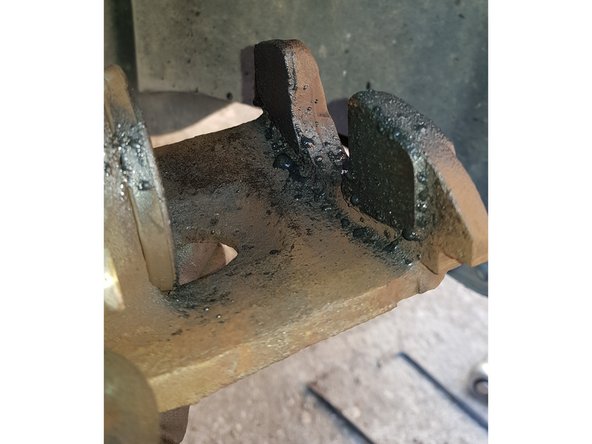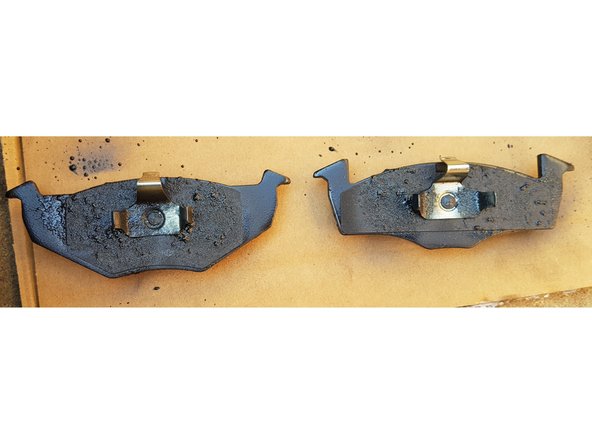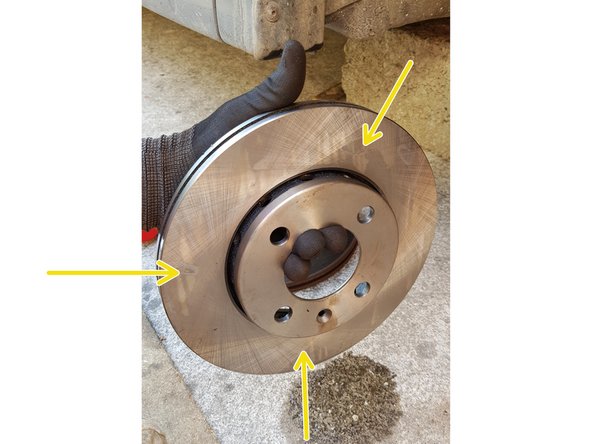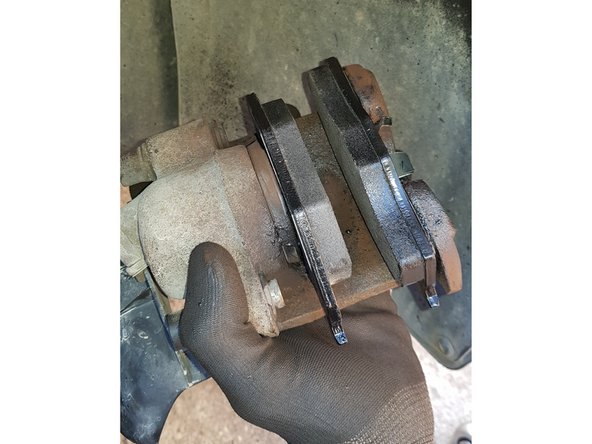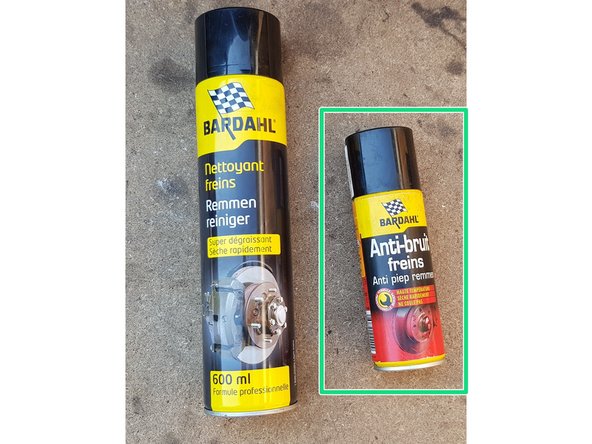Introduction
Opération effectuée sur VW Polo III Restylée 1.4 i 60cv côté passager mais elle est identique côté conducteur
-
-
Disque de frein
-
Plaquette côté piston
-
Insérez un tournevis plat entre le disque et la plaquette côté piston et faîtes levier pour repousser le piston.
-
Une fois le piston repoussé vérifiez le niveau du liquide de frein qui doit être entre ...
-
… le mini ….
-
…. et le maxi.
-
Si le niveau dépasse le maxi retirez-en avec une seringue.
-
-
-
Les 2 vis qui maintiennent l'étrier ne font pas la même longueur donc pensez à repérer leur position.
-
Vis du haut
-
Vis du bas
-
-
-
Tirez la partie supérieure de l'étrier vers l'extérieur puis vers le haut.
-
Les faces inférieures des plaquettes sont différentes donc pensez à repérer l'emplacement de chaque plaquette avant démontage puis sortez-les.
-
-
-
Avec un serre-joint et une cale en bois que vous positionnerez sur le piston repoussez celui-ci à fond.
-
Il est possible de repousser le piston entièrement dès l'étape 2 avec le tournevis.
-
Le piston n'est pas vissé donc vous n'aurez pas besoin d'un repousse-piston, un serre-joint fera l'affaire.
-
Posez l'étrier sur l'amortisseur.
-
Veillez à ce que le flexible de frein ne soit pas tendu.
-
-
-
Le disque est maintenu par une vis qu'il est possible de retirer grâce à un tournevis Phillips PH3.
-
-
-
Avec une brosse métallique nettoyez le moyeu.
-
Vous pouvez enduire la face du moyeu avec un peu de graisse cuivrée afin d'éviter que le disque ne "colle" et ainsi faciliter un futur démontage.
-
-
-
Avec une brosse métallique nettoyez les guides de plaquettes
-
Puis pulvérisez de l'anti-bruits afin d'éviter les sifflements au freinage.
-
-
-
Pulvérisez du nettoyant-frein sur l'étrier pour retirer le plus gros de la poussière.
-
Puis nettoyez-le avec une brosse métallique.
-
-
-
Pulvérisez de l'anti-bruits sur toutes les surface de contact.
-
Ne pas en pulvériser sur les surfaces de frottement.
-
-
-
Pulvérisez du nettoyant-frein sur les 2 faces du disque.
-
Repositionnez le disque et fixez-le avec la petite vis fournie avec le disque neuf.
-
Repositionnez les plaquettes dans l'étrier en les mettant aux bonnes places puis fixez l'étrier avec les 2 vis.
-
-
-
Voici l'anti-bruits que j'utilise et qui est particulièrement efficace.
-
Une fois le remontage terminé, enfoncez plusieurs fois la pédale de frein pour mettre les plaquettes en appui contre les disques.
-
Vérifiez le niveau de liquide de frein dans le bocal.
-
Pour le rodage des plaquettes neuves, ne pas effectuer de freinages brusques lors des premiers 200 kms.
-
L'efficacité des premiers freinages peut être réduite.
-
Annulation : je n'ai pas terminé ce tutoriel.
5 autres ont terminé cette réparation.










